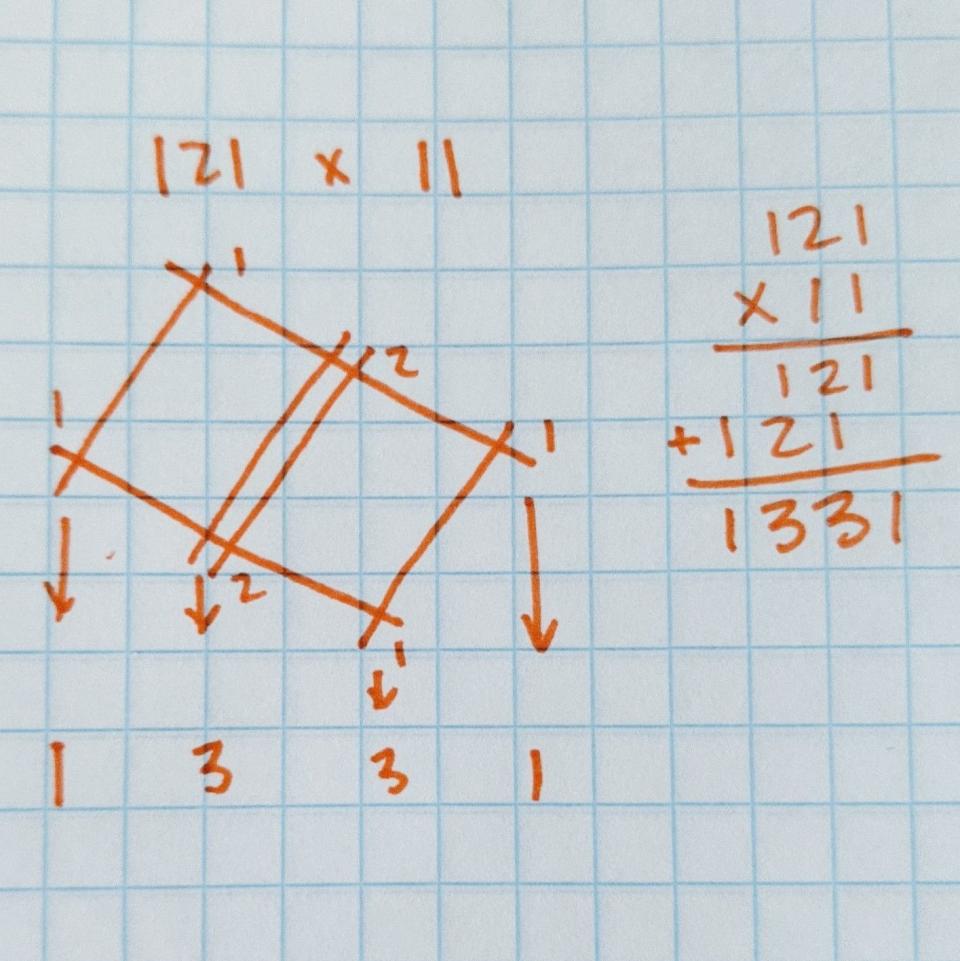The Japanese Way to Multiply Is So Much Cooler Than Ours

A viral TikTok video shows an old, unique way to multiply using sticks.
The origins of the multiplication method aren't clear. It may come from China, Japan, or somewhere else.
Whatever the roots, this way to multiply likely wasn't meant to look cool, but rather, be practical.
A TikTok video of a novel, ancient multiplication method has gone viral. While the user, jesslouisec, calls the method Japanese multiplication and some mathematicians say it’s “Vedic multiplying,” its real origins aren’t exactly clear. Sometimes it’s Japanese, sometimes it’s Chinese, and sometimes it’s called line or stick multiplication.
By any name, it’s a graphical version of the way many American children and others around the world learn to multiply, and for the right kind of numbers, it can allow people with very minimal math literacy to find the answers. Here's how to do it:
When you arrange numbers in this way, you’re mimicking the columns in traditional long multiplication. It’s easy to see how this works with a very simple three-digit multiplicand:

And in examples where the numbers have small individual digits—preferably all 1s and 2s, to be honest—the stick method is elegant. When we multiply bigger digits, the diagramming gets unwieldy pretty fast. Consider 12 × 21 compared to just 9 × 8.
The stick method is presented in viral videos as a “trick,” but the 9 × 8 example shows its value as sticky and shareable video material is pretty limited. But applications of methods like this, especially ones with documented histories back to ancient times, weren’t designed to look cool or be impressive.
People working as builders or doing business often didn’t know how to read and write, let alone have something to write on at hand. If they could break problems into actual physical pieces they could arrange and count, that was easier, faster, and required less brute force memorization even in the short term.
We can’t find documentation of this “stick method” before the last 20 years, and all the popular versions online just point to one another. Contrast this opacity with the chisanbop method from the 1940s or the Russian way to multiply, both well documented for decades. There’s an Arabic method shared by the Mathematical Association of America that dates back to the 10th century, another sourced (and ancient!) way to multiply using your hands and fingers only.
Vedic math technically means the kinds of math used by people in ancient India during a time known as the Vedic period, but the term was coopted by a 1960s book that claimed the secrets of all mathematics were unlocked from some previously misunderstood ancient texts. These days, the term is attached to countless math shortcuts as a way to give them a mysterious and ancient air, like urban legends, “ancient Chinese secrets,” or whatever stuff GOOP says about its products.
Perhaps someone made this method up more recently as an interesting and cool visualization of how long multiplication works. If so, that’s a real design feat. And the method could very well appear in Vedic Mathematics or the life’s work of creator Bharti Krishna Tirthaji, which would make it up to 100 years old. It’s still a great illustration of a mathematical idea and a fun way to understand one way to multiply.
You Might Also Like

